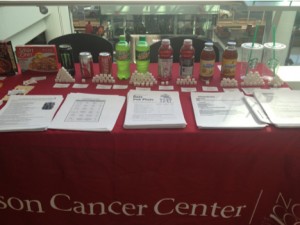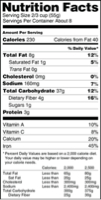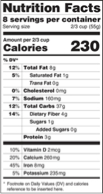Last week we had a group of student volunteers that set up a fantastic display for National Nutrition Month. A prominent part of the display was a visual demonstration of how much added sugars are in a variety of common drinks. This type of display never fails to draw attention and it got me thinking about the subject of added sugars.

I have written before about some of the misconceptions about sugar and cancer, but to be fair, in general, added sugars are not healthy for most of us. Added sugars certainly make food taste better and adding sugar to foods can sometimes tempt someone to eat something when his or her appetite is low. This can be a benefit for those going through cancer treatment, but for most of us, being tempted to eat more is not a good thing.
Added sugars have been getting a lot of scrutiny lately. They will be featured prominently on the proposed new USDA Nutrition Facts labels and The World Health Organization (WHO) recently began taking comments on their new recommendations for added sugars. The WHO may issue guidelines that will recommend that people should eat no more than 5 % of their daily calories from added sugars – about 9 teaspoons per day for men and 6 teaspoons per day for women. The new food guide label will make it easier to identify added sugar, but certainly won’t make it any easier to limit it!


So I decided to take a closer look at my own diet for a few weeks and really get a sense of how much added sugar I am eating. I will write a short piece each week for the next three weeks and report on the added sugars in my own diet. I am honestly not exactly sure how much added sugar I eat each day, but I will be taking the advice that I give to patients and tracking what I eat, with special attention to added sugars. If you are interested, please check back over the next few weeks and see how I do!
I will track what I eat using the USDA Super Tracker; it is free, relatively easy to use and can be found at www.supertracker.usda.gov. Importantly, it tracks “empty calories”, which includes solid fats, added sugars and alcohol. I will be report back on my added sugars in particular. Added sugars do not include the naturally occurring sugars that are in whole fruits, vegetables and unsweetened dairy products. The confusion about naturally occurring versus added sugars is something the USDA would like to make clearer on new food labels, but until then it takes some detective work along with some knowledge about foods to decipher naturally occurring sugars from added sugars. For instance, the 3 teaspoons (yikes!) of sugar that I put in my coffee this morning are certainly added sugar, as was the 1 teaspoon of jelly that I put on my toast. In addition, each slice of my bread has ~ ½ a teaspoon of added sugar, so I’m off to a quick start on my added sugar (4 ½ teaspoons already!), but the grapefruit that I had, did not contain any added sugar, only natural sugar, so I don’t need to worry about it contributing to my total of added sugars for the day.
Join me by tracking your own added sugar use. Empowering yourself with this knowledge is the first step in making a change for the better!
More information about the new food guide label
More information about the proposed new WHO guidelines
See My Sugar Use Blog: Week One!
See My Sugar Use Blog: Week Two!